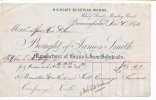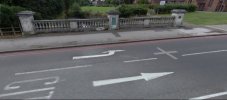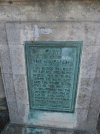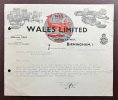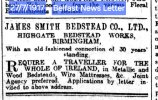About Slumberland...
Slumberland was formed in 1919 under the name of Crown Bedding by John Seccombe, a recently demobbed airman using his war gratuity. Originally established in Sherlock Street, Birmingham along the street from his father's drapery store. The first Slumberland products to be produced were feather pillows, straw palliasses and flock mattresses.
At that time their bed bases were formed by stretching a woven wire mesh over a metal frame - when the wire sagged, the tension could be restored by winding it up with a handle!
The Slumberland logo was introduced in the early 1930’s on a range of beds and became so popular that the name remained as a brand and grew into one of the largest bed and mattress brands in the world. In 1940 Crown Bedding is reported to have been producing tank parts and was heavily into Government contracts, which not only involved the making of beds for the military, but also parachutes, emergency rubber water tanks, military webbing, repairing of R.A.F aircraft gantries, and many other types of war equipment.
In 1947 a British Industries Fair Advert shows the company as Manufacturers of "Slumberland" Registered Spring Interior Mattresses. "Slumberland" Registered Spring Interior Divans. "Slumberland" Feather Pillows and Bolsters. "Intalok" Hospital Spring Interior Mattresses. "Intalok" Upholstery Spring Units. "Restola" Registered Upholstery.
In 1970 Duport took over Slumberland Ltd and its associated companies giving the combined group 30% of the UK beds market (including Vono's share). The manufacturing base eventually moved to Cambridgeshire following a buy-out in 2001 by Hilding Anders– the largest bed group in Europe, which also acquired three other bed and furniture firms, including Myers. In 2013 the group was taken over by Steinhoff.
Can anyone throw any light on the slumerland founder - he is allegedly John Seccombe but as far as I know he was always known to employees at the Redfern Road Works, Tyseley as "Mr Jack". By coincidence I came across the below extract from a web search describing the evacuation of a young boy, the son of a Slumberland employee in WWII.
What was Mr Jacks RAF history and who was his RAF pal Mr Beasley?
"In this hall stood a large grandfather clock but more important a wooden aeroplane propeller, which to me was awe inspiring. The propeller, and sadly as it turned out, was from the aeroplane in which the pilot son of Mr and Mrs Beasley had been killed, in the Great War. Mr and Mrs Beasley was a delightful old couple who made us immediately welcome, and by coincidence Mr Beasley had been an acquaintance of Mr Jack Seccombe, the company Chairman of Slumberland in Birmingham and Dad’s supreme boss".
Advert from 1949
View attachment 125417

